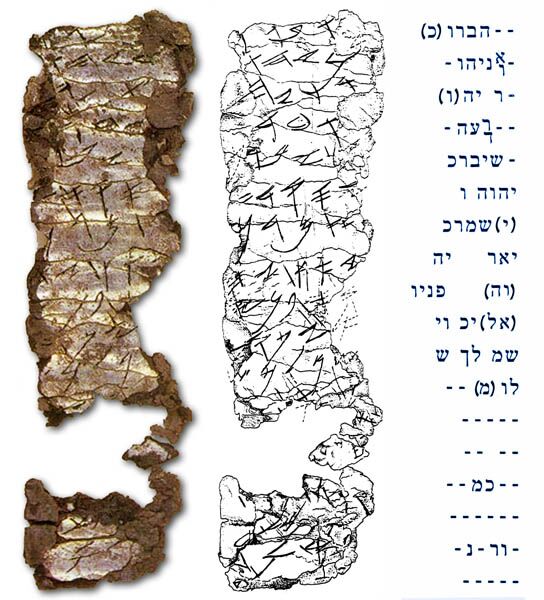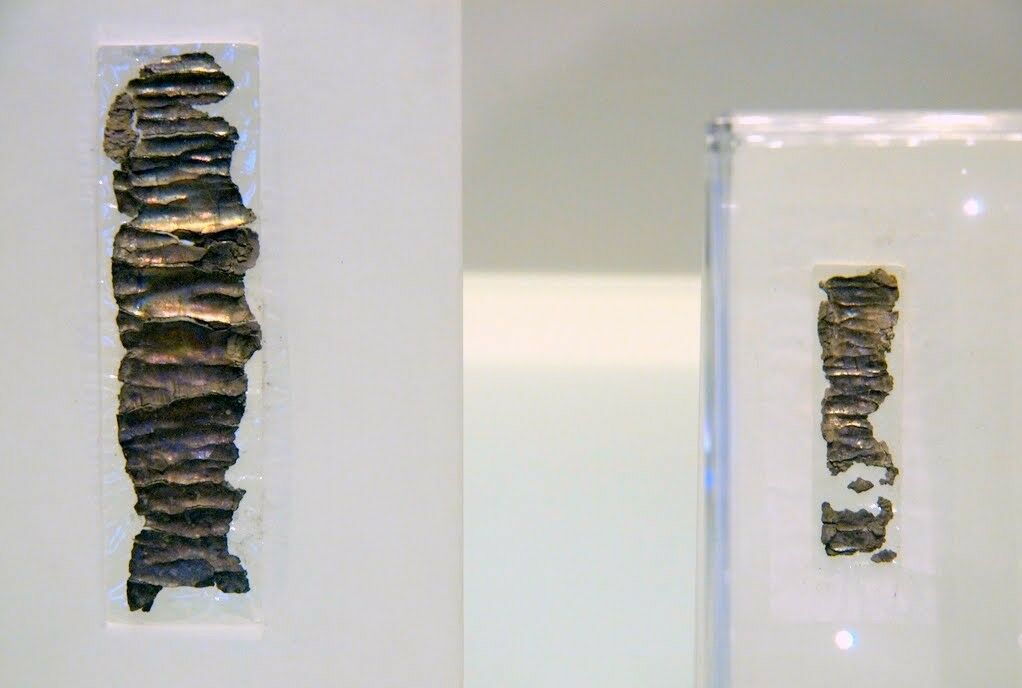In the early 1980s, after three years of research and testing, the archaeological world was rocked as two tiny silver scrolls were finally unrolled and exposed to the light of day—revealing the oldest-preserved passages of Scripture ever discovered.
The Ketef Hinnom scrolls were discovered in southwest Jerusalem, during a 1979 excavation conducted by Prof. Gabriel Barkay. The tightly-wound metal scrolls were so delicate that two museums declined the opportunity to try to open them. When conservators at the Israel Museum at last managed to unroll the objects, they were stunned to find preserved verses from the Torah—passages from what we know today as Numbers 6 and Deuteronomy 7.
These scrolls were among a collection of over 1,000 objects found inside a tomb on the edge of the Hinnom Valley, southwest of the Jerusalem’s Old City. The scrolls are 99 percent pure silver and are tiny: the longest is barely 9.5 cm long by 2.5 cm wide (unrolled). Barkay believes the scrolls may have been worn as amulets. Their somewhat fragmentary text reads as follows (alongside the select Bible verses):
Amulet i:
… the great … [who keeps] the covenant and graciousness toward those who love [him] and those who keep [his commandments …].
The [Eternal?] … blessing more than any … and more than evil. For redemption is in him. For Yahweh is our restorer [and] rock.May Yahweh bless you and keep you. [May] Yahweh make [his face] shine ….
Paralleling the following Bible verses:
… who keepeth covenant and mercy with them that love Him and keep His commandments … (Deuteronomy 7:9)
The Lord [Yahweh] bless thee, and keep thee; The Lord make His face to shine … (Numbers 6:24-25)
Amulet ii:
May [he/she] be blessed by Yahweh; The warrior/helper and the rebuker of evil:
May Yahweh bless you and keep you; May Yahweh cause his face to shine upon you and grant you peace.
Paralleling the following Bible verses:
The Lord bless thee, and keep thee; The Lord make His face to shine upon thee … and give thee peace. (Numbers 6:24-26)
(The parallel wording is even more obvious when directly comparing the Hebrew lettering on the amulets to the Hebrew scriptures. The exact letter-accuracy, preserved and continued in the Hebrew Bible for over two-and-a-half millenniums to this day, is truly remarkable to see.)

The scrolls were dated based on the script and the artifacts around them to the late-seventh/early-sixth century b.c.e., making them the oldest biblical texts ever found—predating the Dead Sea Scrolls by some 500 years. The writing form matched that used before the conquest of Judah by Nebuchadnezzar in the early sixth century b.c.e. (similar, for example, to letters found at the biblical city of Lachish).
This came as a surprise for some, because a prevailing theory among minimalist biblical scholars was that the Torah, including these biblical passages, was not written until centuries later—following the 586 b.c.e. destruction of Jerusalem. As such, there was some pushback to the dating. However, in a 2004 study, high-definition photographs were examined by four scholars of four different institutions, concluding that the new techniques enabled them to “reaffirm with confidence that the late preexilic period is the proper chronological context for the artifacts”—a conclusion now accepted by the mainstream, that the Torah was in use (at very least in part) during the First Temple Period.

And while the Ketef Hinnom scrolls are the earliest-known quotation of Scripture, there is another artifact from around the same time period, possibly even earlier (seventh century b.c.e.) that displays a knowledge of laws contained within the Torah: the Mesad Hashavyahu Ostracon.

These items together fit alongside a particular biblical account: King Josiah ruled during the last half of the seventh century b.c.e. 2 Chronicles 34 describes the Torah (or at least a significant part of it) as having been lost, and rediscovered during a renovation of the temple at this time. The discovery, and Josiah’s reaction to it, led to a great religious reawakening in Judah. Perhaps it was only after finding the scroll that the Torah passages were able to be reincorporated into services such as the Ketef Hinnom funeral, or cited in legal disputes by even a “lowly” farmer (as was the case with the Mesad Hashavyahu ostracon).
Whatever the answer, it is evident from the Ketef Hinnom scrolls that choice passages were picked from a compilation of scriptures in existence during the seventh century b.c.e. The discovery (among many others) adds weight for the traditional, early dating of the biblical text. For more information on evidence for the dating of the Bible, take a look at our “Antiquity of the Scriptures” series.
